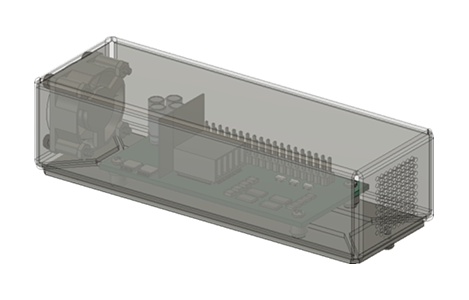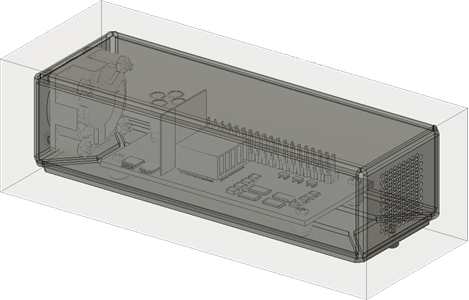Fluid domain in electronics cooling
When you switch to the Simulation workspace and select an electronics cooling study, the software creates the fluid domain that represents the air, in and around the model and its parts, automatically for you. The external environment allows both for natural convection to occur around the device, and for the free flow of air for proper cooling.
 |
 |
| Electronics enclosure, as modeled | Electronics enclosure with fluid domain added |
Default environment conditions
Fluid material (air) with variable density, air properties at 20°C:
- density = 1.205 kg/m3
- specific heat = 1005 J/(kg⋅K)
- thermal conductivity = 0.02587 W/(m⋅K)
- viscosity = 1.8208e-05 kg/(m⋅s)
Gravity is ON by default and is required for the natural convection analysis
Ambient/environment temperature is 25°C by default
Boundary conditions defined on the external surfaces of the fluid domain allows fluid to enter and escape the model. Boundary conditions defined on the external surface are as follows:
- Pressure = 0 Pa
- Temperature = ambient/environment temperature.
If flow sources (fans) are defined, the forced convection analysis is executed
Buoyancy effects are taken into account in the forced convection analysis.
